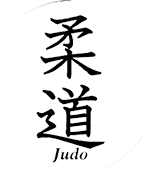In the early 1900's Kanō shihan headed a jūdō instruction course for jūdō instructors from around Japan.
There are several historically important points to this, and I have more detail regarding it, but as CK pointed out, there are plenty of people stealing research from here and other places I post and reposting it as if they had performed the research. While I'm happy to provide food for thought and mutual benefit I'm tired of people freeloading on my translation and research (then, usually screwing it up to boot). As I plan to publish something that uses this and much more information, I won't provide details. The point of this thread is to provide food for thought as to the content and intent of the course.
By this time, Kanō shihan no longer physically taught in the Kōdōkan, and had not for many years. Instruction was overseen by Yamashita and Yokoyama sensei, but actually taught by younger sensei such as Murakami sensei, and some notable others unknown, overlooked, and unappreciated today. (Despite their decades of dedicated, excellent instruction, who will remember the key instructor sensei in a hundred years if they doesn't make 10dan someday?) Much as the Kōdōkan today, I guess - there's a chief instructor but don't expect him to demonstrate technique very often.
The course was divided into sessions by Kanō shihan, Yamashita sensei, Yokoyama sensei, and Murakami sensei. It is not clear if they were taught in sequence, or in parallel (as in: Kano shihan would give a lecture, then someone taught jūdō, which I suspect).
Kanō shihan's lectures included:
1. jūdō theory
2. the development of jūdō
3. kata and randori
4. jūdō as self-defense
5. jūdō as a method of physical education
6. jūdō as a method of spiritual training
7. jūdō as a method of recreation
8. the objectives of jūdō as organized for middle school instruction
9. the principle of jū
10. posture
11. eight directional kuzushi
12. 'tsukuri / kake'
13. methods of measuring success in middle school jūdō
Yamashita sensei's lectures, with actual jūdō practice, included:
1. explanation of waza (techniques)
A. tachiwaza 1kyo 2kyo 3kyo
B. Katame no kata
2. Extracurricular explanation (not sure what this means - perhaps an optional, after hours session at the dojo for more advanced students?)
A. Koshiki no kata
B. Ura no kata (note: reference to the ura portion of today's Koshiki no Kata? see posts by Wdax and CK below)
C. Itsutsu no kata
Yokoyama sensei's lectures, with actual jūdō practice, included:
1. explanation of waza
A. tachiwaza 4kyo 5kyo (note: thus completing the Gokyo no waza)
B. Nage no kata
2. dojo randori
I'll finish the list later.
I plan to take the All Japan Judo Federation instructor's course this fall - it will be interesting to compare curricula (I bet 'don't grope the kiddies' was not high on Kanō shihan's list.... )
)
Lance Gatling
Tokyo
There are several historically important points to this, and I have more detail regarding it, but as CK pointed out, there are plenty of people stealing research from here and other places I post and reposting it as if they had performed the research. While I'm happy to provide food for thought and mutual benefit I'm tired of people freeloading on my translation and research (then, usually screwing it up to boot). As I plan to publish something that uses this and much more information, I won't provide details. The point of this thread is to provide food for thought as to the content and intent of the course.
By this time, Kanō shihan no longer physically taught in the Kōdōkan, and had not for many years. Instruction was overseen by Yamashita and Yokoyama sensei, but actually taught by younger sensei such as Murakami sensei, and some notable others unknown, overlooked, and unappreciated today. (Despite their decades of dedicated, excellent instruction, who will remember the key instructor sensei in a hundred years if they doesn't make 10dan someday?) Much as the Kōdōkan today, I guess - there's a chief instructor but don't expect him to demonstrate technique very often.
The course was divided into sessions by Kanō shihan, Yamashita sensei, Yokoyama sensei, and Murakami sensei. It is not clear if they were taught in sequence, or in parallel (as in: Kano shihan would give a lecture, then someone taught jūdō, which I suspect).
Kanō shihan's lectures included:
1. jūdō theory
2. the development of jūdō
3. kata and randori
4. jūdō as self-defense
5. jūdō as a method of physical education
6. jūdō as a method of spiritual training
7. jūdō as a method of recreation
8. the objectives of jūdō as organized for middle school instruction
9. the principle of jū
10. posture
11. eight directional kuzushi
12. 'tsukuri / kake'
13. methods of measuring success in middle school jūdō
Yamashita sensei's lectures, with actual jūdō practice, included:
1. explanation of waza (techniques)
A. tachiwaza 1kyo 2kyo 3kyo
B. Katame no kata
2. Extracurricular explanation (not sure what this means - perhaps an optional, after hours session at the dojo for more advanced students?)
A. Koshiki no kata
B. Ura no kata (note: reference to the ura portion of today's Koshiki no Kata? see posts by Wdax and CK below)
C. Itsutsu no kata
Yokoyama sensei's lectures, with actual jūdō practice, included:
1. explanation of waza
A. tachiwaza 4kyo 5kyo (note: thus completing the Gokyo no waza)
B. Nage no kata
2. dojo randori
I'll finish the list later.
I plan to take the All Japan Judo Federation instructor's course this fall - it will be interesting to compare curricula (I bet 'don't grope the kiddies' was not high on Kanō shihan's list....
Lance Gatling
Tokyo
Last edited by NBK on Thu Aug 07, 2014 4:23 pm; edited 1 time in total




